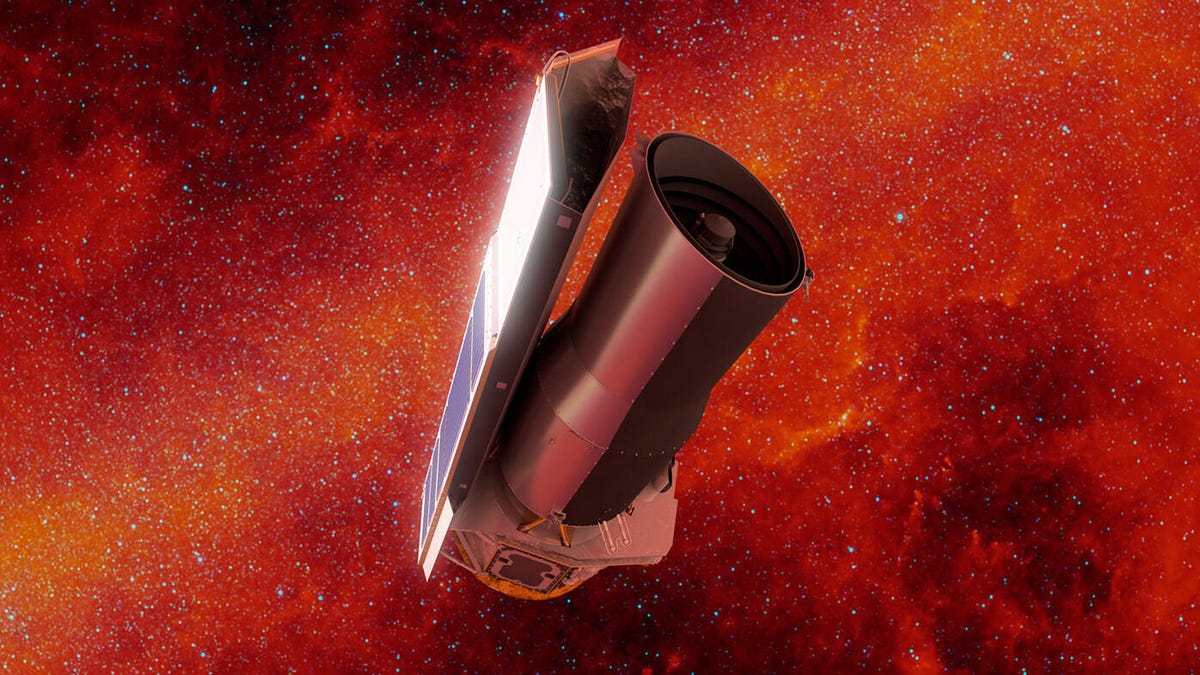NASA just shut down the pioneering space telescope Spitzer
After almost 17 years of staring into space, NASA has said good night to Spitzer.

Good night to a Great one.
The Spitzer space telescope, a bullet-shaped infrared eye that allowed scientists to peer at the edges of the cosmos for almost 17 years, has been taken offline. NASA announced the safe mode command had been sent to Spitzer at 1:56 p.m. PT on Thursday, turning off the telescope's systems.
Happening now: The safe mode command has been sent to Spitzer.
— NASA Spitzer (@NASAspitzer) January 30, 2020
It takes about 15 minutes for the command to reach the telescope. #SpitzerFinalVoyage
The signal, which would have arrived at Spitzer at approximately 2:11 p.m., is the final step in decommissioning the tireless observatory, which first launched in 2003. Spitzer's work since then has allowed scientists and researchers to see space in infrared wavelengths, giving them the opportunity to study gas, debris and dust and furthering our understanding of cold exoplanets and stars, galaxies right at the edge of the cosmos and what star-stuff makes up the universe.
"Spitzer taught us how important infrared light is to understanding our universe, both in our own cosmic neighborhood and as far away as the most distant galaxies," said Paul Hertz, director of astrophysics at NASA HQ, in a press release on Jan. 23.
Spitzer was one of NASA's four "Great Observatories," a suite of space-based telescopes studying different wavelengths of the universe. Two other great observatories remain in orbit: The Hubble Space Telescope and the Chandra X-Ray Observatory. The third, the Compton Gamma Ray Observatory, was deorbited in 2000 after one of its gyroscopes failed.
Spitzer will not suffer that fate. As the telescope orbits the sun and trails Earth by about 158 million miles, it has a slightly sadder destiny. It's doomed to follow Earth for another six decades until, eventually, it zips past us and drifts off into the all-encompassing dark of space. Let that sink in and try not to get emotional.
Farewell, Spitzer.

